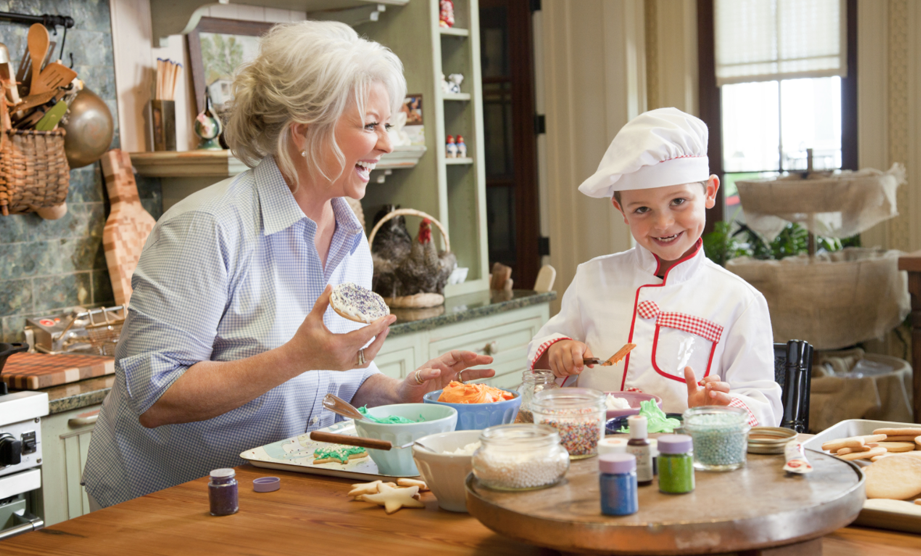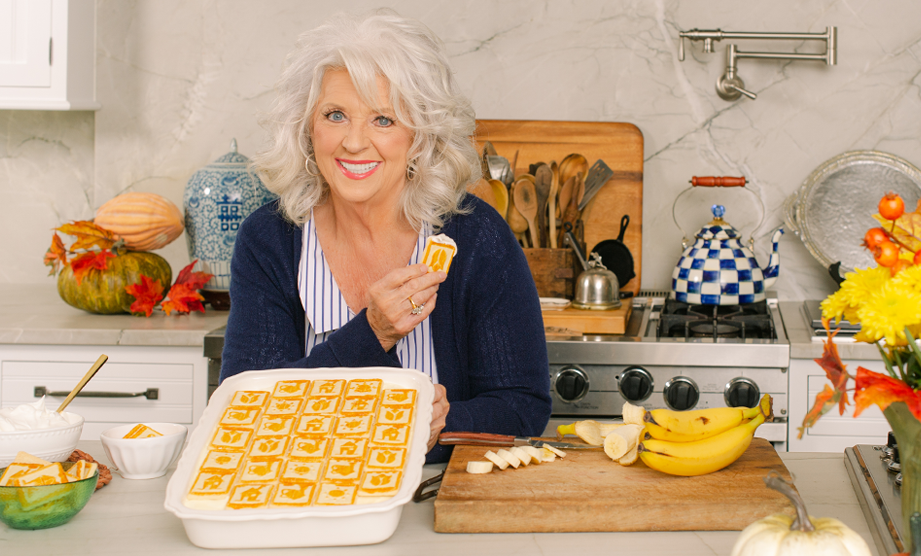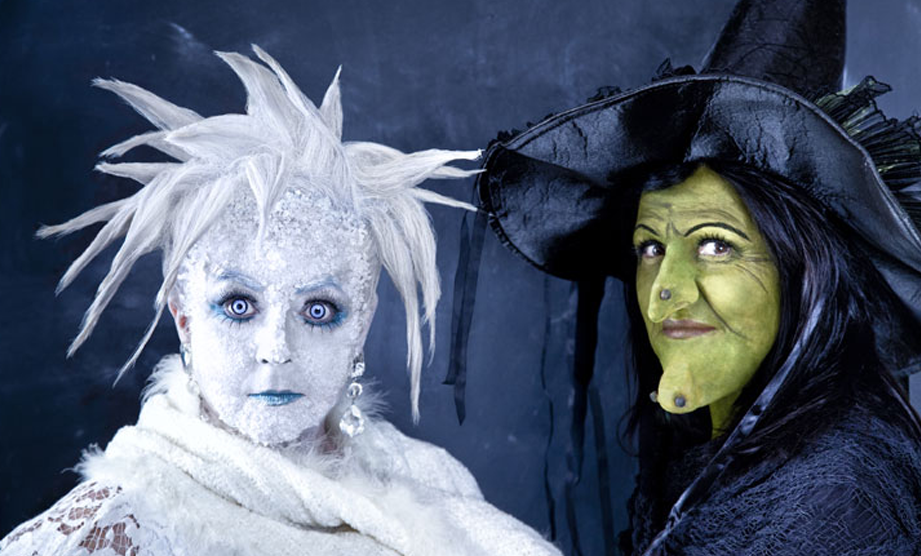I am all for gettin’ kids in the kitchen at a young age. I got in the kitchen with my grandmothers, my boys did with me, and now Matthew and Jack join Brooke and Jamie in cooking and baking. It can stimulate a love for cooking, which could lead to a healthier lifestyle in the future, and teaches them lifelong skills. If you’re hoping to teach your kids to cook, I’m providing some kitchen basics—simple descriptions of many basic tasks involved in cooking and baking, tips on how to measure both wet and dry ingredients, and, of course, some useful safety tips!
Now, parents, you know your kids and what they can handle. A small child certainly shouldn’t be wielding a knife, frying bacon, or working over a hot stove. Consider your child’s abilities when assigning tasks. Trust me, they’ll enjoy stuffing pastas, rinsing veggies, and kneading dough as much as they will chopping carrots. So grab your children or grandchildren and let’s get started!
COMMON TERMS
Bake – Cook in the oven. There are top and bottom burners, and the heat from baking comes from the ones in the bottom of the oven.
Beat – Mix two or more ingredients with a spoon or a mixer until they are smooth.
Boil – Cook on top of the cooktop in a pot until you see bubbles. The hotter the temperature, the bigger the bubbles.
Broil – Cook in a very hot oven until the top gets brown and bubbly. The heat for broiling usually comes from the burners in the top of the oven. You usually leave the oven door cracked open a little when you broil.
Chop – Cut food into pieces with a knife. The recipe will tell you if the pieces should be big or small.
Cube – Cut food into little squares all the same size.
Dice – Cut food into teeny pieces all the same size.
Flour – This is a white powdery ingredient that you use to make cookies, cakes, and bread. Sometimes a recipe will tell you to “flour” a pan, which means that you will put about a tablespoon of flour into a buttered pan and shake the pan until the flour coats all the sides and the bottom of the pan.
Fold – This is stirring really gently (the opposite of “beat”) with a rubber spatula, going deep into the batter and lifting it over on top of itself, like how you might fold up your dinner napkin.
Fondue – This is food cooked in a special pot in the center of the table. I have recipes for both chocolate and cheese fondue. I do not recommend that you attempt to fry in a fondue pot until you are older.
Garnish – Edible decoration that you put on a plate before you serve whatever it is you cooked—a little sprig of parsley, a slice of lemon, a berry, or a cherry tomato, for example.
Grate – Rub food against a grater to make slivers. Watch your fingers and fingernails!
Grease – This is like flour—it’s a noun and a verb! Grease, the noun, is a fat, like butter or shortening or bacon grease. When the directions tell you to “grease” the pan, you rub the fat over the inside surface of the pan.
Knead – This is a fun activity where you take dough and slap it on your countertop, press into it with both palms, then fold the top of the bottom and turn the dough. Do it again and again and again! Sometimes (usually) you have to add a little flour to the dough to keep it from sticking.
Melt – Heat something solid, like butter, until it becomes a liquid.
Mince – This is like “dice,” only smaller—cut food into tiny pieces that are the same size.
Pan-Fry – This is cooking food on top of the cooktop in a skillet in a little oil or butter.
Pare – Cut off the skin of a potato or apple
Peel – Pull off the skin of a banana or orange or onion, or the shell from a hard-cooked egg.
Roll Out – Flatten with a rolling pin or your fingertips—usually biscuits, cookies, bread, or pizza dough.
Sauté – This is almost the same as “pan-fry.” Cook in a skillet on the cooktop in a small amount of fat. The difference is that when you pan-fry, you usually don’t turn the food but once or twice. When you sauté, you keep turning it over and over until all the food gets done.
Scrape Down – When mixing food, take a rubber spatula and push down all of the food on the sides of the bowl so that it gets mixed in good.
Sift – Put dry ingredients in a sifter and turn the handle until all of the stuff (like flour) gets mixed up and comes out of the holes in the bottom.
Simmer – Cook in a pot on the cooktop over low heat until there are tiny bubbles all around the sides of the food in the pot.
Sprinkle – Take one ingredient and scatter it lightly over the top of something else.
Stir – Mix with a spoon.
Toss – Don’t throw it! Mix it very lightly.
Whip – Use a mixer to beat something vigorously, like cream or egg whites. This is super fun!
Whisk – Another noun-and-verb word! A whisk is an instrument that looks like the beaters on an electric mixer. You use it to mix things like eggs and to stir sauces so they will be smooth. When a recipe says to “whisk” something, you use a whisk to stir the ingredients together.
HOW TO MEASURE
Measuring is important when you cook. You can’t just guess—you have to use the exact amount that the recipe tells you to if you want your cookies and cupcakes to taste good.
There are two types of measuring cups: One type is used for dry ingredients, and the other is used for liquid ingredients. However, sometimes the “dry” ingredients aren’t dry: You use a “dry” measuring cup to measure mayonnaise and sour cream.
Cup Sizes
One-fourth (¼)
One-third (⅓)
One-half (½)
One cup
Bonus tip: this is a fun way to learn and practice fractions!
To Measure White Sugar and Flour
Dip the dry-type measuring cup into the flour and fill it until it is heaping full. Take the back of a butter knife and scrape off the top until it is level.
To Measure Brown Sugar
Spoon the brown sugar into the measuring cup you use for dry ingredients and pat down until the sugar is even with the top of the cup. You do this just like you do wet sand in a bucket on the beach. When you turn the sugar out, it should be in the shape of the cup.
To Measure Butter
Butter has measuring marks on the wrapper so you can just cut off what you need.
One-fourth (¼) stick equals two tablespoons
One-half (½) stick equals one-fourth (¼) cup
Six tablespoons equals one-third (⅓) cup
One stick equals one-half (½) cup
Two sticks equal one cup
To Measure Cut-Up Foods
Cut them up first, and then place them into the measuring cup you use for dry ingredients until they reach the top of the cup.
To Measure Liquids
Use a liquid measuring cup and put it on the counter. Stand so that your eyes are even with the cup. Pour in the water, juice, milk, or oil until it reaches the line exactly on the cup.
To Measure Salt
Stand by the sink and pour the salt into the measuring spoon. Level it with your fingertips.
To Measure Baking Powder, Baking Soda, Pepper, and Cinnamon or Other Spices
Dip the measuring spoon into the container and get a heaping spoonful of whatever you are measuring. Press the spoon against the side of the container and pull out the spoon—the ingredient will be packed into the spoon. Or you can level off the ingredients with the back of a butter knife, or the side of your finger!
To Measure Liquids in a Spoon
Pour them into the spoon over the sink or a bowl or cup until they reach the top. Have the bowl you are adding them to nearby so you won’t have to walk with the liquid in the spoon.
SAFETY TIPS:
– MOST IMPORTANT: Remember, what you can do on your own depends on how old you are, so always check with your adult helper before doing anything in the kitchen by yourself!
– Only cook when an adult is there to help you, especially if you are cutting, opening cans, boiling, frying, or taking something out of the oven.
– If your adult helper says it’s ok to use a knife, always use a cutting board when cutting. When using a knife, peeler, or vegetable parer, always cut away from yourself.
– Wash your hands a lot. There are germs on just about everything—the food you are using, your hands, the countertops, and the cutting board. Wash your hands after handling any food, and before putting anything in your mouth. Make sure you dry them well, too, so you don’t have slippery hands.
– Wear an apron, smock, or shirt that you don’t mind getting dirty when you cook. Don’t cook in long sleeves. They can get caught on the pots and pans, can drag through your food, or if you get too close to the heat on the stove, they can catch on fire. Also, be sure to tie back long hair for the same reasons.
– Have hot pads or oven mitts handy. If your adult helper says you’re old enough to use the stovetop, you can use hot pads or oven mitts any time you are taking a pan out of the oven or taking a lid off of a pot. Otherwise, your adult helper should take care of those tasks for you.
– Use a step stool so that you are comfortable at the counter or in front of the cooktop. Don’t try to cut or cook standing on your tippy toes.
– Turn pot handles to the back of the cooktop, away from the heat of any burners, so that you don’t accidentally knock a pot or pan over on yourself.
– Wear closed-toe shoes to protect your piggies from a dropped pan or broken glass.
– Turn off the heat when you take a pan or pot off the cooktop. Turn off the oven when you’ve finished cooking.
– Rinse fruits, vegetables, chicken, fish, and meat under cold water before you eat or cook them. Pat dry. This will rinse away most of the bacteria.
Happy cookin’, kids!
xoxo,
Paula








